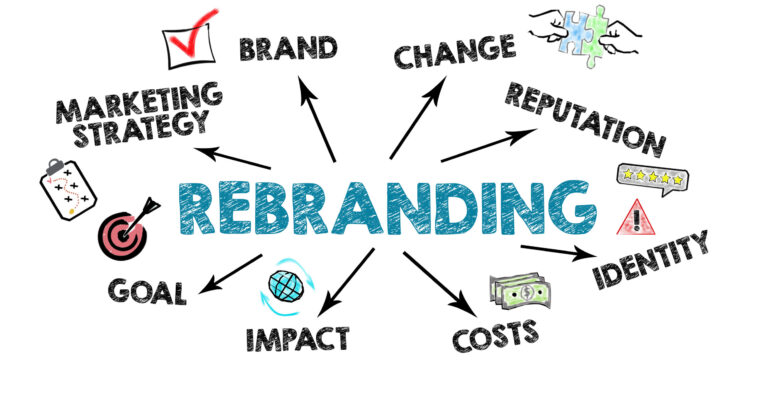
New Brand, New Name: Tips for Managing a Rebrand Successfully
Selecting a fresh name and logo can feel as dramatic as moving the entire headquarters. It shakes up marketing, legal, finance, and almost everyone else, forcing them to sit at one long table and hash it out. When the dust settles, a careful plan usually turns the leap into another growth chapter rather than a cautionary tale.
1. Build the Right Internal Team
A name change impacts every part of your organization, so it’s essential to bring the right people to the table early. In addition to your marketing team, loop in key departments:
- Legal: trademarks, DBAs, entity filings
- Finance: tax IDs, banking, payroll updates
- Procurement: vendor contracts, insurance
- Regulatory: permits, compliance
Decide who does what, ring-fence a slot in the calendar for team catch-ups, and pry open the gated fences between departments. Branding touches everyone, and it only works when everyone pulls the rope together.
2. Develop a Detailed Rebrand Plan
This is bigger than just updating your logo. You’ll need a comprehensive rollout plan that includes:
- Timelines and key dependencies
- Inventory of branded assets (signage, digital, forms)
- Legal approvals and filings
- Budgets and vendor coordination
Treat this plan as your master roadmap—it should keep everyone aligned and accountable.
3. Communicate Clearly and Often
Name changes can spark strong reactions. Keep everyone informed:
- Internally: Help your team understand the why behind the change and what to expect.
- Externally: Ease the transition with messaging that connects your old identity to the new one. Don’t leave your audience confused.
4. Budget for the Unexpected
Rebranding with a name change often costs more than a typical refresh. Plan for:
- Faster timelines (and the higher costs that come with them)
- Replacing or updating a wider range of materials
- Bringing in outside support, if needed
Start with your must-haves, but build in flexibility — you’ll likely need it.
5. Involve Stakeholders at the Right Time
If the name change is still under wraps, you’ll need to balance confidentiality with progress carefully. Use placeholder assets or mock logos when necessary, and bring in essential teams, such as IT or HR, with sufficient lead time to stay on track.
6. Protect the Brand You’ve Built
A new name doesn’t mean starting from scratch. If your existing brand carries equity, preserve it:
- Use transition language (“formerly known as…”)
- Set up smart redirects to maintain web traffic and SEO
- Keep your voice, tone, and visual identity consistent
With a solid migration strategy, you can honor your past while building for the future.
The Bottom Line
Choosing a new name is never a small chore. Still, it’s one of the few moves that can yank the whole brand forward in one clean motion. Backed by a solid plan and a team ready to push, you can unveil a fresh look with the kind of surefooted energy that sticks in people’s minds.
Thinking about a rebrand? We can help.
At Epstein Creative Group, we’ve guided mission-driven organizations and professional firms through every stage of rebranding — from naming and strategy to rollout and communications. Let’s get started.
